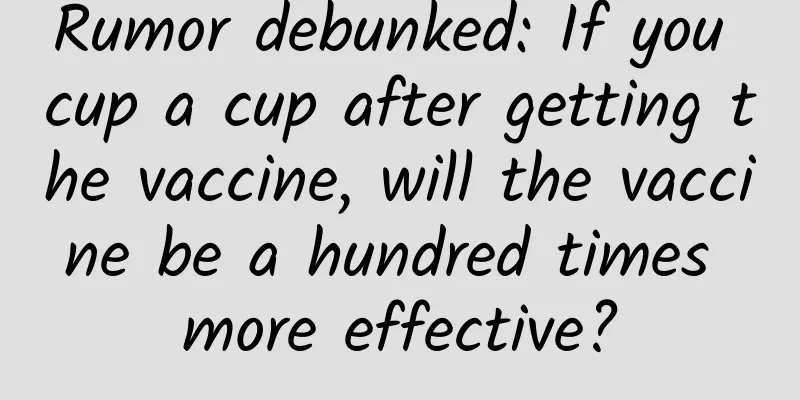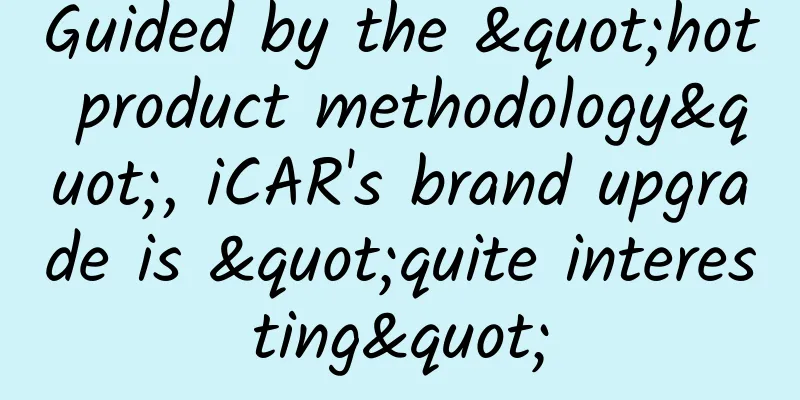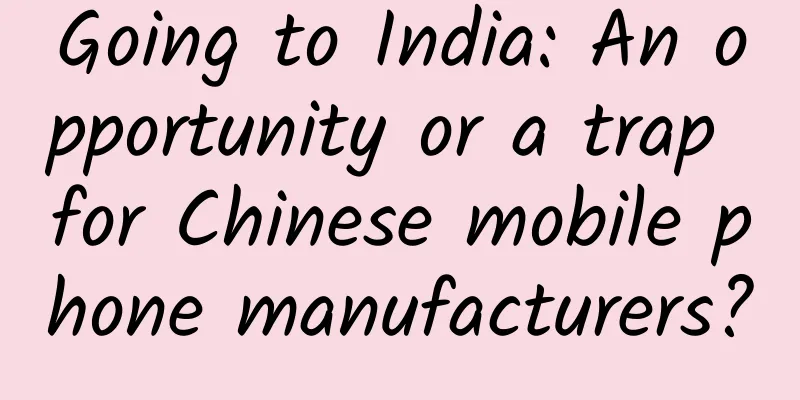Rumor debunked: If you cup a cup after getting the vaccine, will the vaccine be a hundred times more effective?

|
Rumor has it: The United States has discovered a new method to enhance the effectiveness of the new coronavirus nucleic acid vaccine. The vaccine is first injected and then cupping is performed on it. The vaccine's immune response is 100 times higher. Fake rumors Verification points: 1 There is indeed such a study on the new method of enhancing the efficacy of the new coronavirus nucleic acid vaccine, but the purpose is to explore how to improve the efficiency of DNA delivery, not specifically the new coronavirus vaccine. The idea that "cupping can greatly improve the effectiveness of new coronavirus vaccination" is actually a misunderstanding of the research. 2 The negative pressure demonstrated in the experiment to increase the vaccine delivery effect is for a vaccine that is not currently put into practical use. It is not applicable to the currently widely used mRNA vaccines, inactivated vaccines, and recombinant protein vaccines. 3 We also don’t know how effective the experimental vaccine is compared to the actual vaccine currently in use. Even with the addition of negative pressure technology, this does not mean that this type of DNA vaccine is really better than the existing new crown vaccine. In short, the research is still in its early stages, and the actual application prospects are still uncertain. Recently, a netizen asked Jiushi: "The American research team has discovered a new method to enhance the efficacy of the new coronavirus nucleic acid vaccine. The vaccine was first injected subcutaneously into the mice, and then cupping was performed on them. The results showed that the immune response of the vaccine was 100 times higher than that of the control group." Is this true? 1. There is indeed such a study, which discusses whether negative pressure can improve the efficiency of DNA delivery On November 5, 2021, an academic research paper titled "Novel suction-based in vivo cutaneous DNA transfection platform" was indeed published in Science Advances. When interpreting the paper, some people believe that the research in it shows that cupping can greatly improve the effectiveness of COVID-19 vaccination. This is actually a misunderstanding of the research. The suction-based in the title does refer to a form similar to cupping. But this study does not say that cupping can increase the effectiveness of the COVID-19 vaccine, but rather discusses whether applying negative pressure (cupping also forms negative pressure) can improve the efficiency of DNA delivery. And a possible application scenario corresponds to a special type of vaccine-DNA vaccine, that is, whether the delivery efficiency of the vaccine can be improved by applying negative pressure to the skin (there is a similar situation in cupping). The research is still in its early stages, and it is misleading to say broadly that cupping improves the effectiveness of vaccines. Second, this study discusses how negative pressure can increase the efficiency of DNA delivery, not specifically for vaccines. It should be noted that the research paper itself discusses the use of negative pressure to increase the efficiency of introducing exogenous DNA, and is not specifically about improving the effectiveness of vaccines. Introducing exogenous DNA is a very common operation in biological science experiments and has many production applications. For example, genetically modified crops are the process of introducing exogenous genes into some crops, which is actually a process of introducing exogenous DNA. In addition, for insulin that type 1 diabetics need to use, the modern synthesis method is to introduce insulin genes into Escherichia coli and then mass-produce it through biological fermentation. Therefore, improving the efficiency of introducing exogenous DNA has broad application prospects, not just for vaccines. The researchers in this paper want to improve the efficiency of DNA delivery into animal cells after subcutaneous injection of DNA into experimental animals. For example, if the researchers inject DNA encoding fluorescent protein into animals subcutaneously, if the delivery efficiency is high, the amount of fluorescent protein expressed by animal cells will be greater. The researchers found that applying negative pressure to the injection site, similar to cupping, did increase the efficiency of DNA delivery. One possible explanation is that this negative pressure increases the efficiency of cells engulfing foreign DNA molecules. More DNA molecules are able to enter the cells, which may naturally lead to an increase in the final delivery efficiency. However, this discovery is in principle for the delivery of any DNA molecule into cells, not for the delivery of DNA vaccines. Of course, DNA vaccines are a potential application scenario, and the researchers also conducted corresponding experiments in the paper, proving that after injecting a DNA COVID-19 vaccine into animals, applying negative pressure does increase the delivery efficiency, corresponding to more antibody formation. 3. Specifically for DNA vaccines, their delivery efficiency is low, so scientists have been trying various improvement measures, and this study is one of them. Specifically speaking of the DNA vaccine mentioned in the study, this type of vaccine is a nucleic acid vaccine, just like the mRNA vaccine that has become popular due to the COVID-19 vaccine. It uses the genetic code of nucleic acid to deliver the vaccine's antigen information into cells, allowing the human cells to synthesize the antigen themselves and induce an immune response. The mRNA vaccine uses mRNA, a nucleic acid, to deliver antigen information, while the DNA vaccine uses DNA. Compared with mRNA, the chemical structure of DNA is more stable, so a DNA vaccine often does not need to be stored at low or even ultra-low temperatures like an mRNA vaccine, and the storage time will be longer. Therefore, DNA vaccines are also an important research direction. However, a problem with DNA vaccines has always been that the delivery efficiency is very low. mRNA vaccines work in the cytoplasm, as long as the cell captures the mRNA molecules, and current lipid encapsulation technology has achieved this. But DNA is different. DNA vaccines must enter the cell nucleus, and then be transcribed into RNA in the cell nucleus before the encoded antigen protein can be expressed. There is a strict regulatory mechanism for substances entering and leaving the cell nucleus. How to make DNA vaccines effectively enter cells and cell nuclei is a difficult problem. Currently, the most common form of DNA vaccine is plasmid. Plasmids have long been used to deliver exogenous DNA in biological research. A common operation for introducing DNA plasmids into cells in biological experiments is electroporation. In theory, after making a DNA vaccine with DNA plasmids as carriers, short-term, local electroporation can also be added to allow the plasmids to enter the cells smoothly and complete the vaccine delivery. A biotechnology company called Inovio uses this method to develop vaccines, and now its new crown vaccine has also entered clinical trials. Although it is not a DNA vaccine, a viral vector vaccine can also be considered a way to introduce antigens using DNA. For example, the adenovirus vaccine used for COVID-19 uses adenovirus as a vector to deliver DNA encoding COVID-19 antigens. Of course, both adenovirus and electroporation have their own disadvantages. Adenovirus itself can trigger an immune response. If it is a multi-injection vaccine or a booster shot is required, the effect will be affected if there is immunity to the adenovirus vector itself. Electroporation requires special equipment, which increases costs and is not very convenient. Therefore, there is no DNA vaccine for humans on the market yet. Therefore, scientists have been exploring ways to improve the delivery efficiency of DNA vaccines. Combining negative pressure technology with DNA vaccines, as mentioned in a research paper in Science Advances, is one such exploration. Fourth, this study is still in its early stages and is aimed at a vaccine that is not currently in practical use. It would be ridiculous to interpret it as cupping to improve the effectiveness of the vaccine. Finally, one point that cannot be ignored is that this research is still a very early conceptual proof and is probably still a long way from practical application. The study showed that applying negative pressure can improve the efficiency of DNA delivery. If applied to vaccines, it will only work with some DNA vaccines. For example, the widely used mRNA vaccines, inactivated vaccines, and recombinant protein vaccines are not applicable. Even adenovirus vaccines that involve DNA will not require this technology because they infect cells through viruses. In other words, the negative pressure-enhanced vaccine delivery effect shown in the experiment is for a vaccine that is not currently in practical use. This is far from practical. In addition, we do not know how effective the vaccine in the experiment is compared to the vaccine actually used now. Even with the addition of negative pressure technology, this does not mean that this type of DNA vaccine is really better than the existing new crown vaccine. In short, this research is an improvement on the existing DNA delivery technology and is very meaningful, but it may still be a long way from practical application, and it should not be misunderstood as cupping can generally increase the effectiveness of vaccines. |
Recommend
New traffic diversion methods in 2020 and 6 implementation steps!
Behind every search action and every click is a l...
From the perspective of "user experience", "cost" and "revenue", which one has a better future, Mobike or ofo?
Restore the user usage scenario: Register, log in...
Weidian Chen Jian: The road to mobile terminal optimization from the perspective of operation and maintenance engineers
This article is the on-site dry goods of WOT2016 ...
5 key points to distinguish the quality of APP channels, saving you the cost of blind trial and error!
Faced with an increasing number of channels, CPs ...
A "mouth cannon" about architecture
Author: Duan Hechen The title of the article is v...
Beware! These “social gadgets” carry hidden risks, and many children are using them!
You can add friends by tapping, chat, take photos...
Why is the silver bracelet ineffective in testing poison?
Recently, a man in Yibin, Sichuan, picked mushroo...
The ghost of a wronged woman turned into a bird? The name may sound bitter, but I am super cute!
In the early morning or evening of early summer, ...
Shuangyashan SEO training: How can enterprise SEO improve website page inclusion?
For webmasters, how to improve the website's ...
A complete analysis of social media methods for App operation and promotion!
In the era of mobile Internet, traffic is king. I...
Diao Chan's Stock Discussion - Diao Chan Band Training Camp (7th Period) Document
Diao Chan's Stock Discussion-Diao Chan Band T...
Xiaomi said that whoever wins the hearts of the people will win the world, and those young people who paid real money are not happy.
Young people will influence the future consumer m...
Don’t feed them blindly! The more you eat, the better the “nutritious meal” of crops
As the saying goes, "Man is iron, rice is st...
Flavored e-cigarettes, the "sugar-coated bullet" in e-cigarettes
Author: Xiao Dan, Director of the Department of T...
High-conversion information flow account building routine, just use it directly!
Recently, a friend left a message to complain: Th...
![Snowflakes are more beautiful UE4 cluster array 2020 [HD quality]](/upload/images/67cc0060d87f2.webp)








